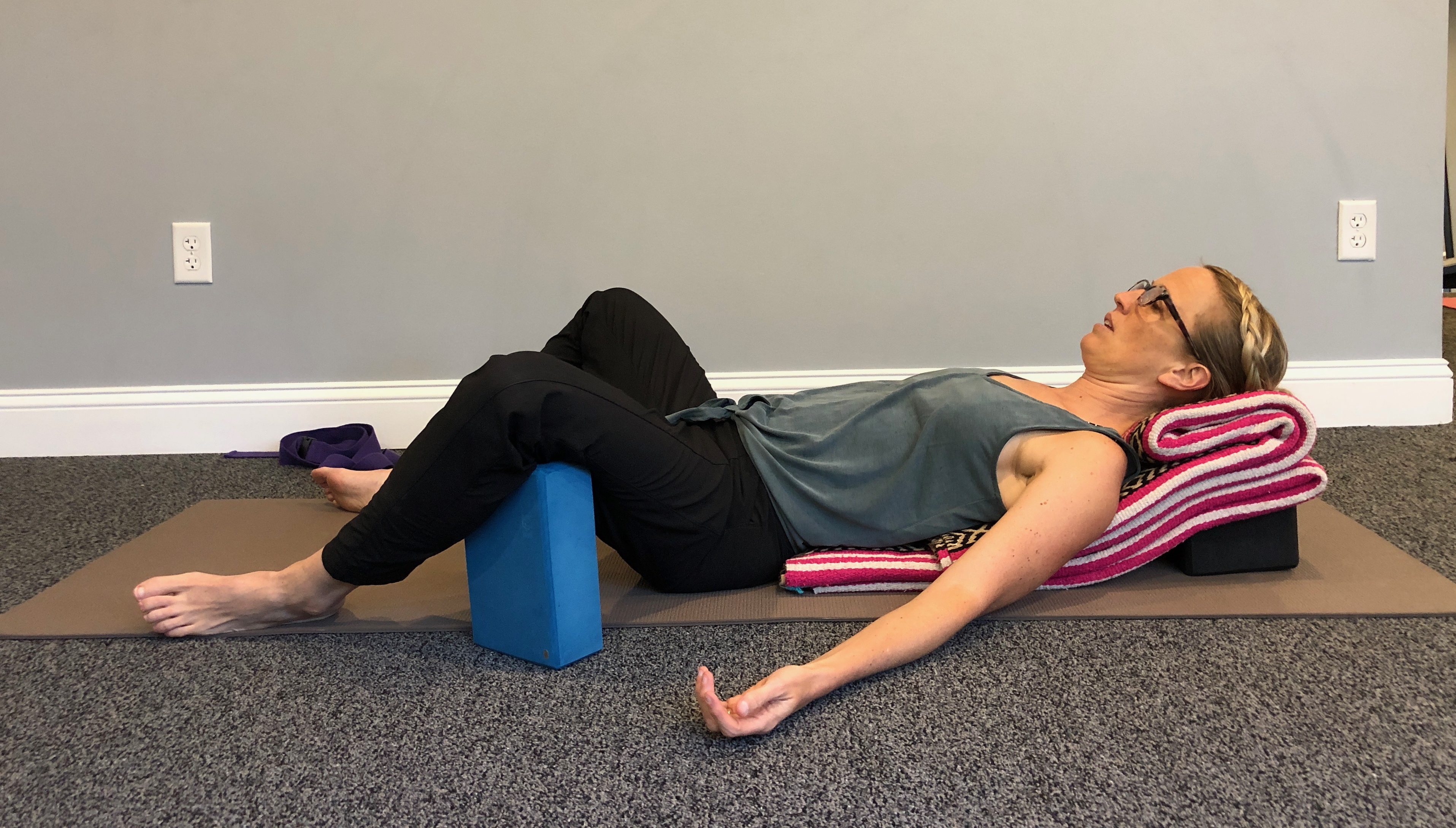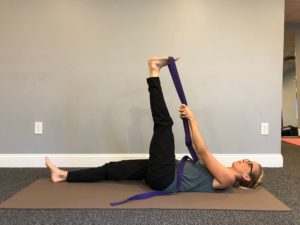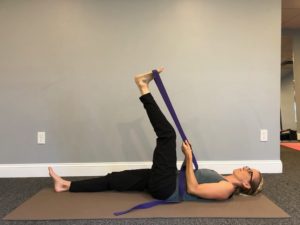
Medical therapeutic yoga uses physical therapy in the context of yoga as medicine to treat many types of conditions including pelvic pain. Releasing tight pelvic floor muscles not only helps manage pain, but can also lead to improved physical health, including better sex and better movement of the whole body.
Pelvic pain can manifest as many different symptoms. Pelvic pain symptoms can include pain with sitting, pain with sex, painful urination or pain with bowel movements. Pain can be felt in the pelvis but also can be referred to the abdomen and other areas of the body like the hips and back.
Symptoms can arise from various sources, but often could be due to overly tight (hypertonic) or sometimes weak (hypotonic) pelvic floor muscles.
Treatment for pelvic pain often has people seeking care with a primary care doctor, orthopedist, OB/GYN, urologist, or even a GI doctor. While the many of the treatments offered by these clinicians are necessary, yoga can be very effective to manage pelvic floor muscle tightness and pain.
Yoga therapist Leslie Howard shared a clever analogy of the pelvis. We know physiologically that the pelvis is a hub of activity in the body for things like reproduction, digestion and elimination just to name a few.
Howard likens the pelvis to a storage unit. Human beings are exposed to stress and conditioning throughout a lifetime. Our pelvis is like a multi-layered storage unit for this conditioning. It’s often a place where we put things that we can’t let go. The pelvis is a place where we can leave the baggage when we don’t want to deal with it at the moment.
We take that conditioning and stress and carry it in the body specifically in the pelvis. The problem is that sometimes the accumulation of this stress can manifest as a variety of symptoms when our body has reached its limit. That limit might be met when we are overextended by too much stress, when we are depleted in sleep, low in nutritional support, or when we are limited in certain types of movement.
So we can understand why the pelvic floor might get tight since it’s sitting at the bottom of this hub of activity and storage in the body but why use yoga and physical therapy as a first line to treat pelvic pain?
Yoga cultivates self awareness of the body, particularly when its practice is under the guidance of a professional who has a medical understanding of pelvic floor muscles. Medical therapeutic yoga can increase awareness of the tight pelvic muscles and help you to understand triggers that cause muscles to get tight in the first place.
Medical therapeutic yoga attempts to provide a person with self empowerment skills to take charge of their own health— to understand that much of health is within his/her control when self awareness is practiced. It helps individuals to understand that treatment is more than a medication, procedure or a stretch that we may use to treat the pain. It’s the way we eat, the way that we breathe, the way that we hold stress, the way we move and the way that we choose to react to our unique life situations.
Here are two yoga poses that we use at Rebalance as a part of medical therapeutic yoga treatment to help release tight pelvic floor muscles. It’s important to emphasize that the benefits of these poses are not only in the position of the stretch (or asana in yogic language) but what you do while you are practicing these poses.
Give attention to how you are performing the pose:
If you are using enough support, you should be able to fully relax and breath with ease.



If you choose to practice one or both of these, consider how the benefits of yoga practice go beyond the mat. Take what you do with your breathing in each pose and use that to help you breathe more calmly when you are dealing with a stressful situation.
If you’re interested in learning more about how medical therapeutic yoga can help treat your pelvic pain, click here to schedule a complimentary phone consultation with our physical therapists.
In-Person and Online Consultations


